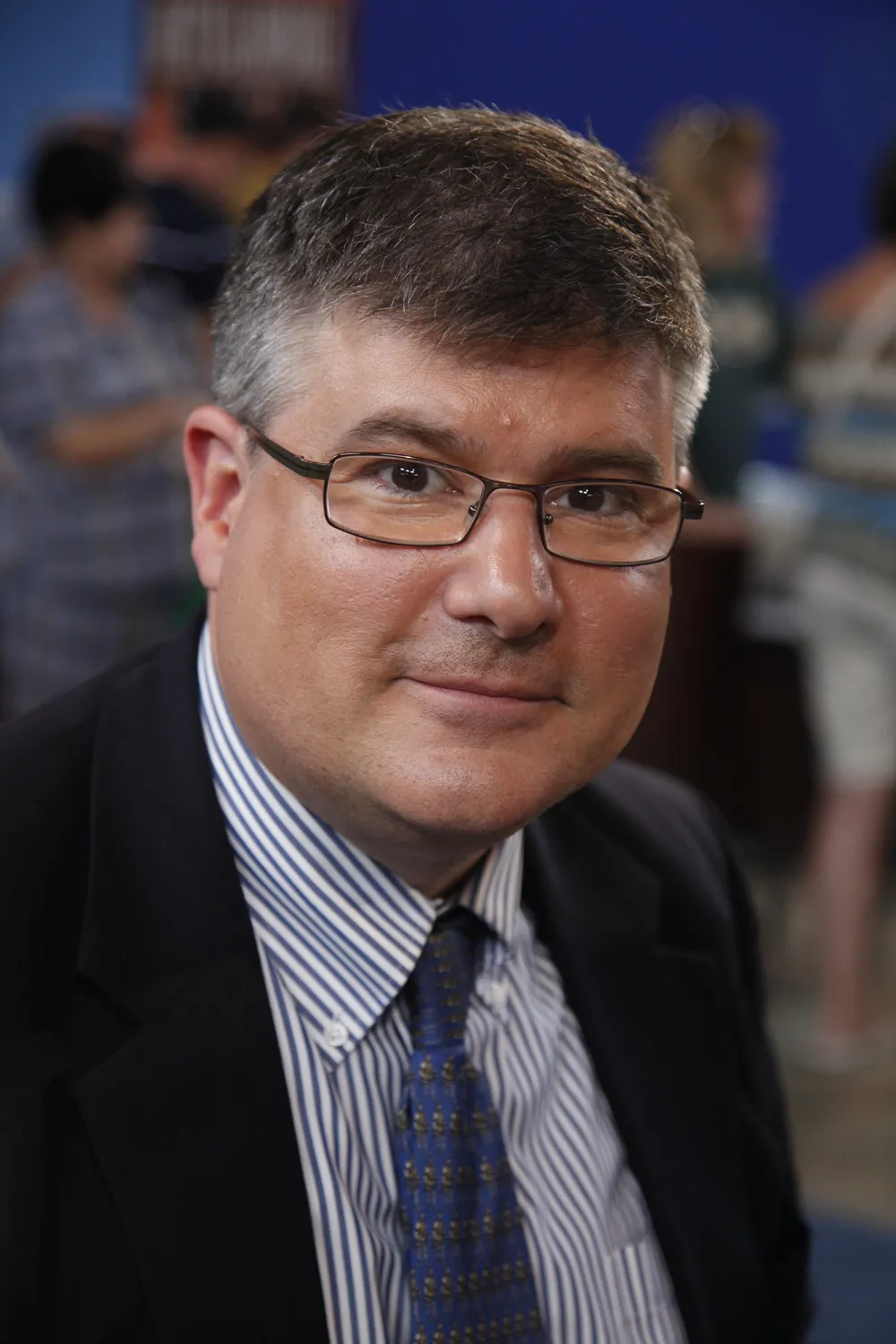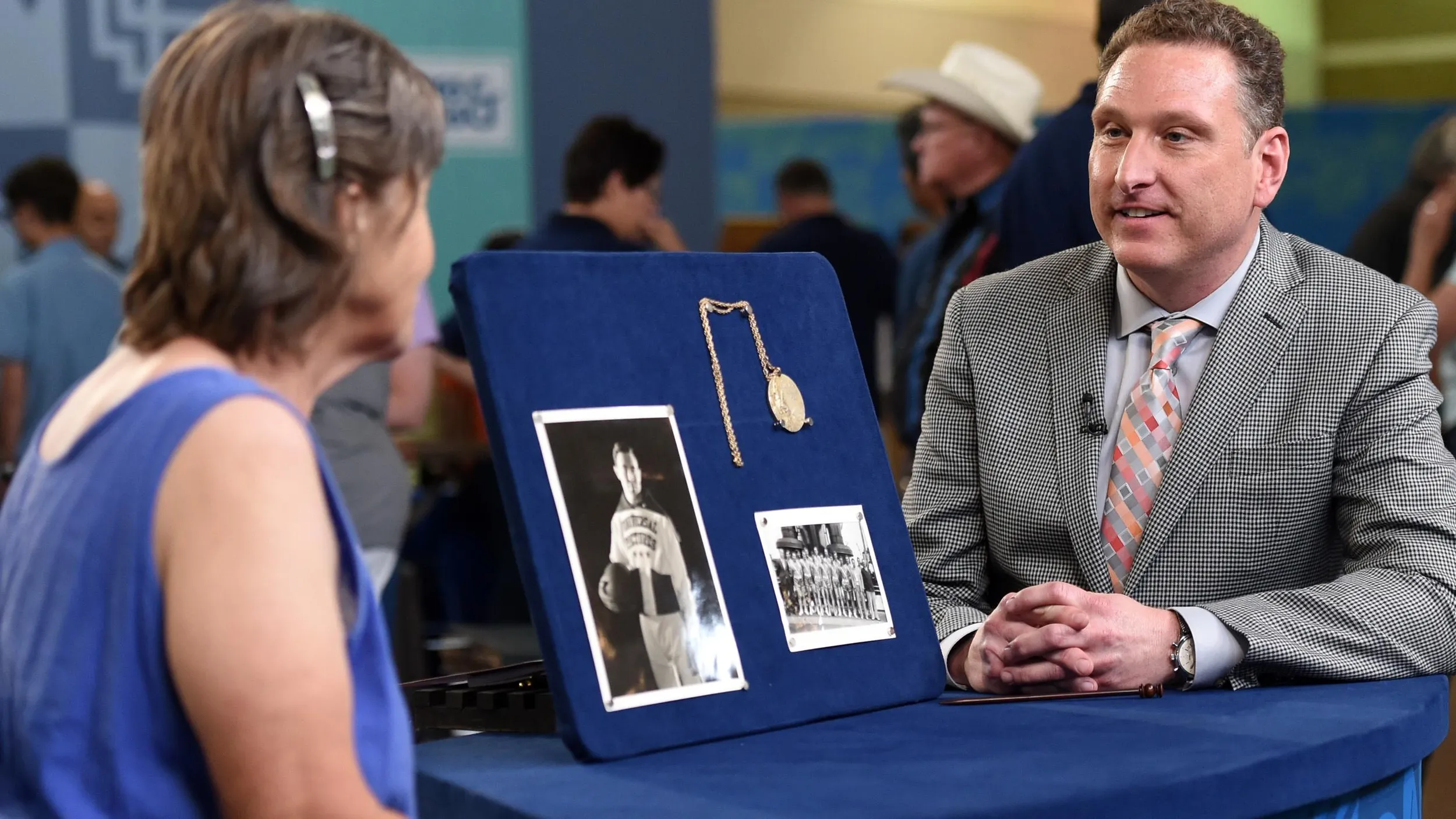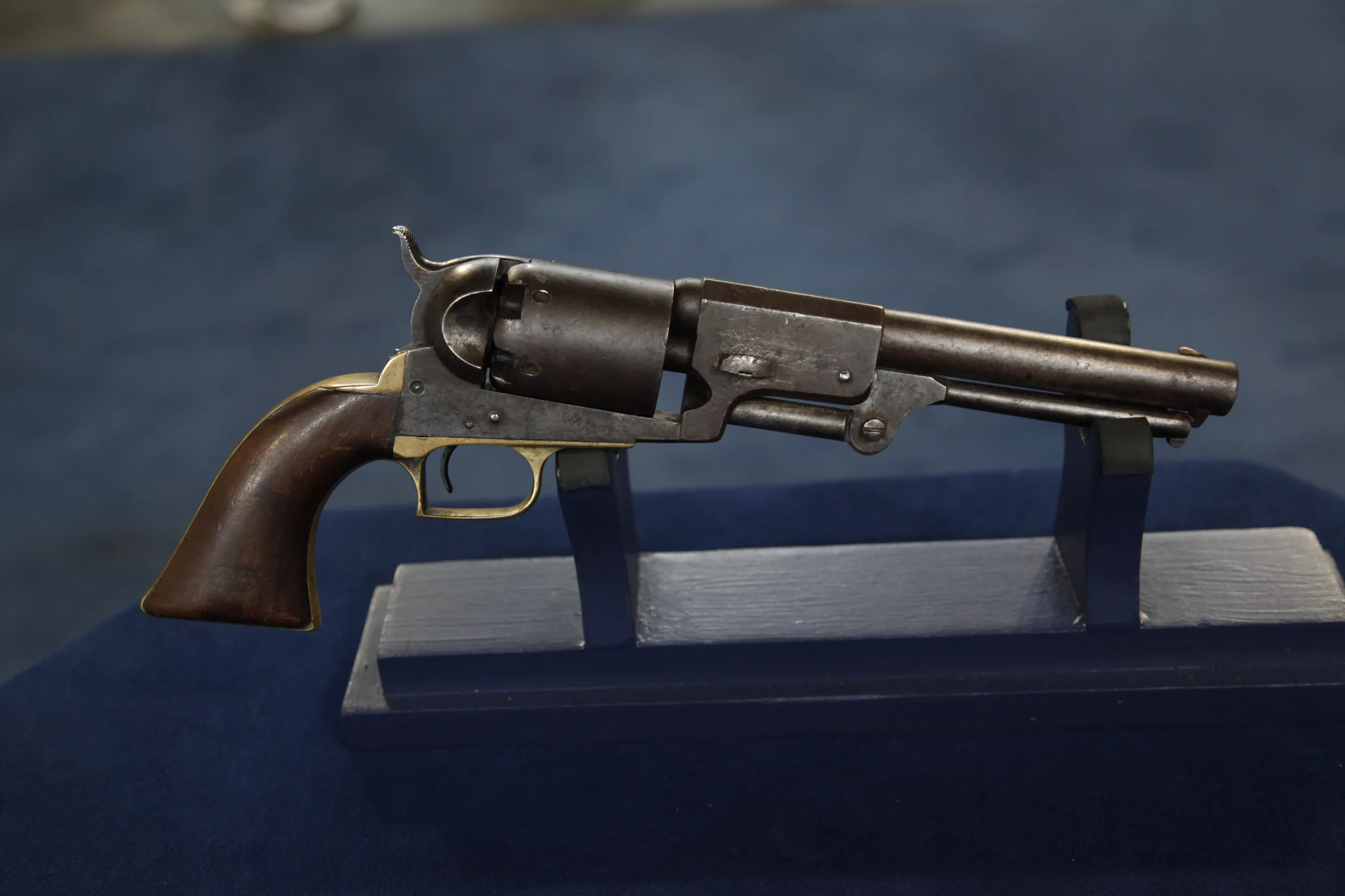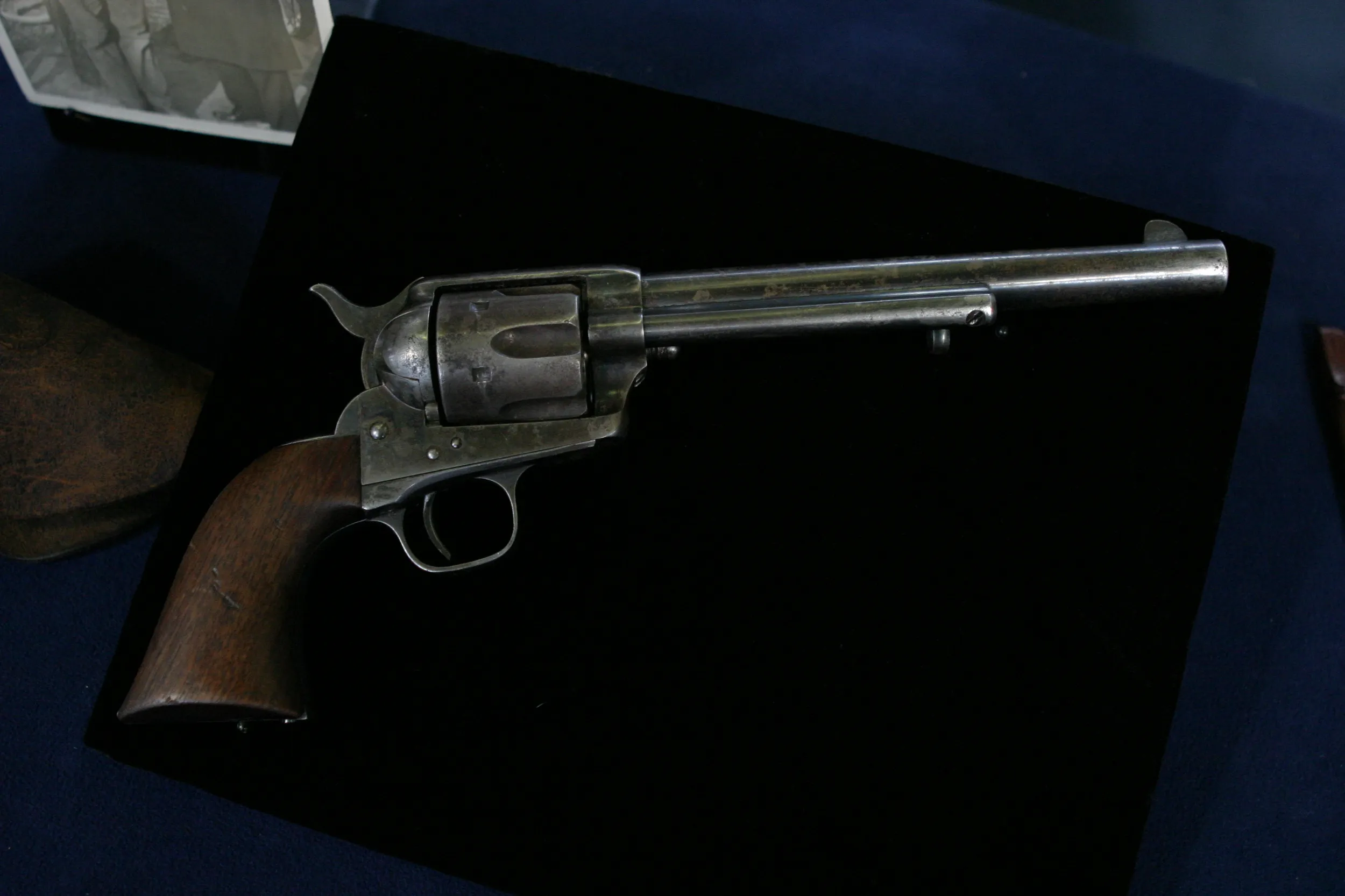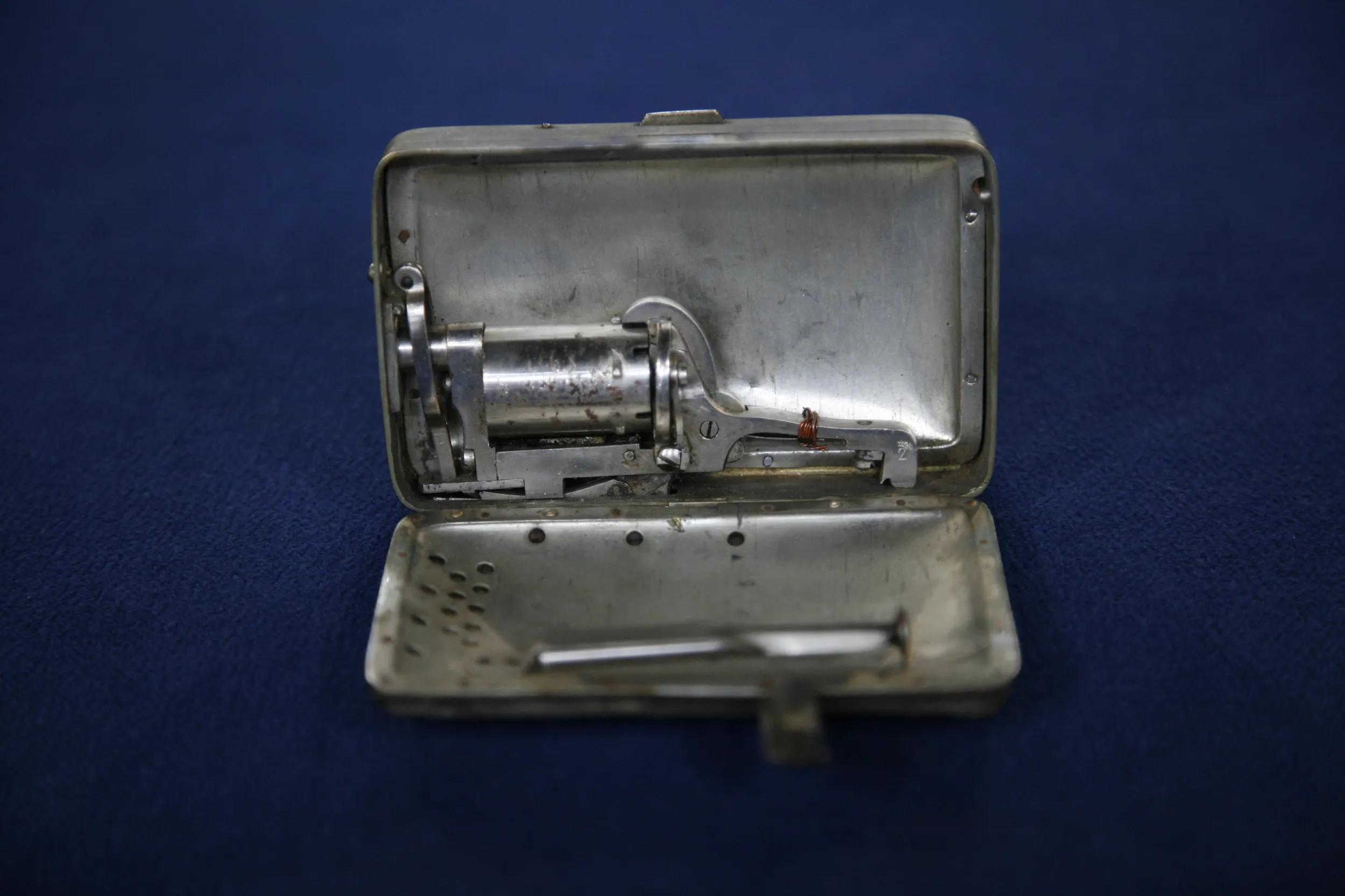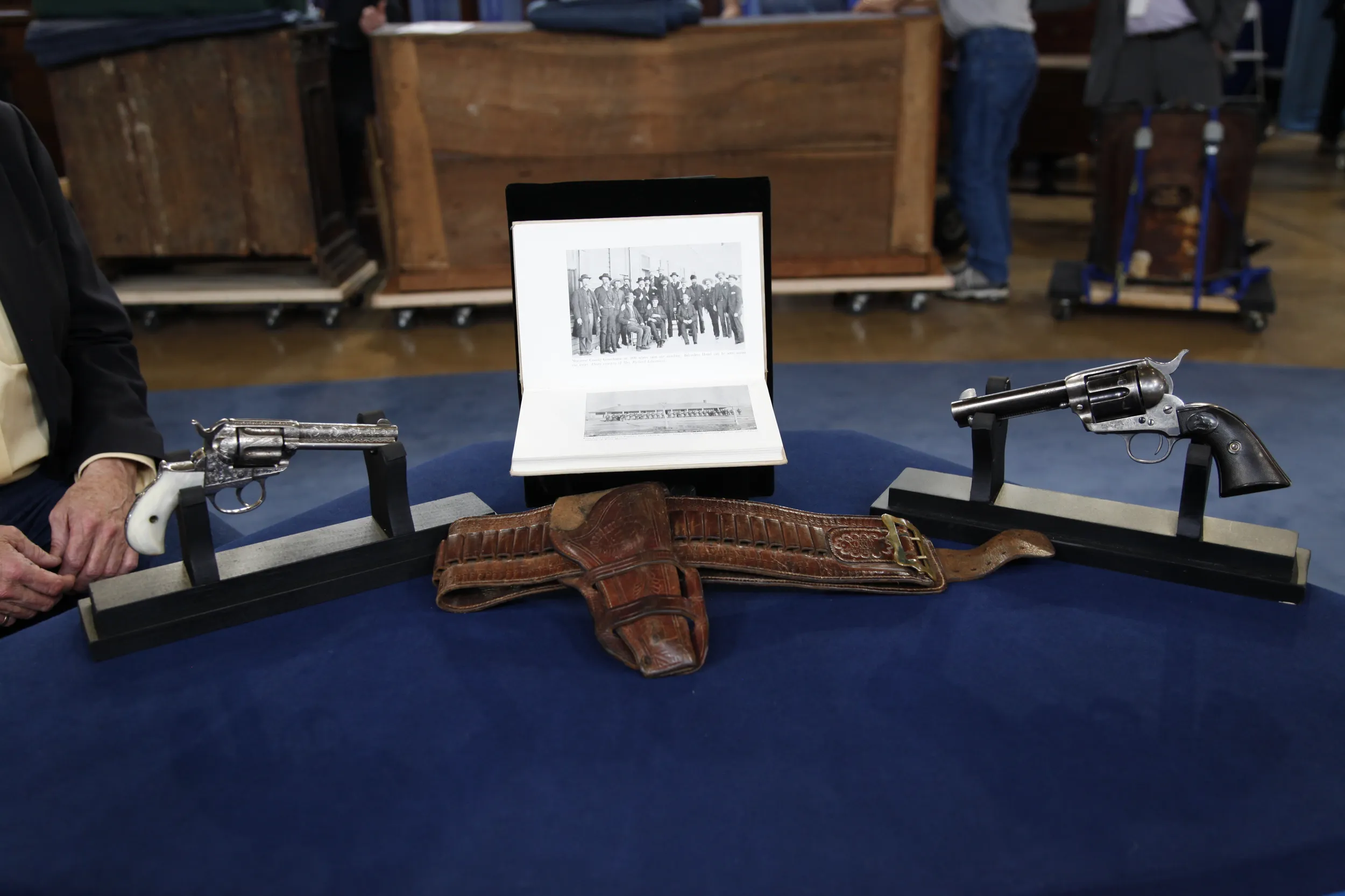GUEST: I inherited it from my grandfather. He was an antique gun collector. He has quite a few guns in his collection. I got them when he died about 11 years ago, miss him every day. This is the one I've done research on, and I've always had a feeling about it, and no one's really taken me seriously until now. I do believe it is a Custer gun. I can trace it back to the ranch where it was found. We can trace it to where it was part of Sergeant Benteen's numbers.
APPRAISER: When did he first acquire it, about what timeframe?
GUEST: It was probably about the 1950s. He was working at Salt River Project, and there's a coworker of his who found out he liked antique guns, he was like, "Well, I got this gun from a guy in California who used to be a rancher in Montana," and he says, "Yeah, it was probably a Custer gun." So my grandfather did a little bit of research. There wasn't too much back then. Now there's more information on it. And what I found, it's within the numbers of the Custer guns that were issued.
APPRAISER: So you know it's a Colt single-action Army revolver.
GUEST: Yes.
APPRAISER: And they started production in around 1873, and the production continued up until the Second World War, and they made a total of about 350,000 revolvers. But in that period from 1873 to the Battle of Little Big Horn in July of 1876, a number of these single-actions were purchased by the U.S. government and shipped to the Seventh Cavalry. This single-action is within the 5,000 serial range. So, many of the guns that are between 4,500 and just around 7,500 are considered in those batches that were shipped to the Seventh Cavalry.
GUEST: Okay.
APPRAISER: So they have the potential of being a Custer gun.
GUEST: Yes. And the trick is trying to prove that it's a Custer gun.
APPRAISER: Correct, that's the hard part. And you have to try to work with the scant records that there are and the research, and most of this comes down to ranges of guns, but this is clearly in the Custer range.
GUEST: Okay.
APPRAISER: It has certain features of early single-actions which are desirable, like on the top, there’s a slanted barrel address, there's the round sort of doughnut or bull's-eye ejector rod, and these are all solid features of those early production guns. But that said, turn it on its side here, and we can see the serial numbers here. It's "5918," and the number here and a little "A." The "A" stands for O.W. Ainsworth, who was an inspector of those early batches that went to the Seventh Cavalry, and here on the front, we can see the cartouche of O.W. Ainsworth. The issue that I have with it is that the varnish is worn off of it, and so the cartouche is still very strong, and so I think it's been refreshed. And in addition, the back strap here is in my opinion clearly a replacement, and the serial number has been restamped, and the hammer is also restamped.
GUEST: Okay.
APPRAISER: And here, the cylinders were also stamped with the serial number, and here we have the remnants of what appears to be a seven and a nine, which doesn't match the serial numbers on the rest of the gun. So the cylinder at some point was replaced.
GUEST: Okay.
APPRAISER: So have you given consideration to what the value is for this?
GUEST: I was guesstimating around $5,000.
APPRAISER: Well, you're spot on.
GUEST: Okay.
APPRAISER: I would estimate at auction, even with its problems, that it would fetch somewhere around $5,000 to $8,000.
GUEST: Oh wow, okay.
APPRAISER: That's pretty good, again, because you almost have half a gun there. If you had more parts that were original to the gun, I would estimate that it would probably fetch somewhere between $20,000 to $40,000 at auction.
GUEST: Wow, okay.
APPRAISER: And of course, you've given some thought to what it'd be worth if you could prove that it was at the Battle of Little Big Horn.
GUEST: Yeah, I've heard they'll test the inside with a bullet that was found there, and that could be worth a million.
APPRAISER: Yeah, well, I would say probably at least a quarter of a million dollars or upwards.
